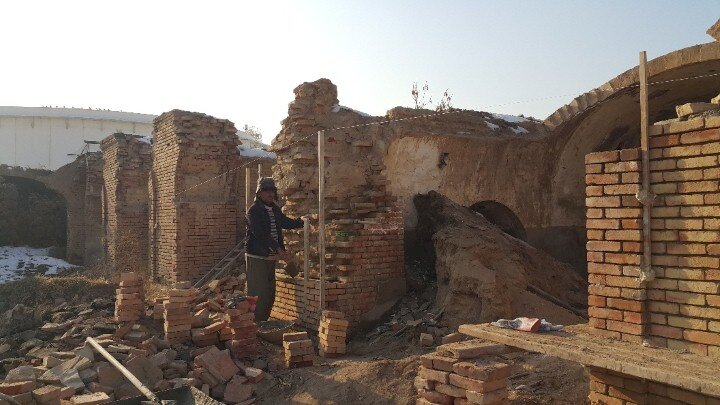New round of restoration starts on old caravanserai in northwest Iran

TEHRAN –The second round of a restoration project has been commenced on the historical Oil Company Caravanserai in the city of Urmia, northwestern province of West Azarbaijan, CHTN reported.
The project involves repairing arches, walls, pillars, as well as destroyed rooms of the structure, the provincial tourism chief Jalil Jabbari, said on Saturday.
It also includes repairing cracks on the building’s façade and rooftop, and replacing worn-out materials, he added.
A budget of 2.2 billion rials (over $52,000 at the official exchange rate of 42,000 rials per dollar) has been allocated to the project, the official explained.
The caravanserai, which dates back to the late Qajar-era (1789–1925) and early Pahlavi period (1925-1979), was registered on the National Heritage list in 2001.
Iran’s earliest caravanserais were built during the Achaemenid era (550 -330 BC). Centuries later, when Shah Abbas I assumed power from 1588 – to 1629; he ordered the construction of network caravanserais across the country.
Such roadside inns were originally built in various epochs along ancient caravan routes in the Muslim world to shelter people, their goods, and animals. The former Silk Roads may be the most famous example dotted by caravanserais.
For many travelers to Iran, staying in or even visiting a centuries-old caravanserai can be a wide experience as they have an opportunity to feel the past, a time travel back into a forgotten age.
West Azarbaijan embraces a variety of lush natural sceneries, cultural heritage sites, and museums including the UNESCO sites of Takht-e Soleyman and Qareh Klise (St. Thaddeus Monastery), Teppe Hasanlu, and the ruined Bastam Citadel.
The region has been the seat of several ancient civilizations. It formed part of Urartu and later of Media. In the 4th century BC, it was conquered by Alexander the Great and was named Atropatene after one of Alexander’s generals, Atropates, who established a small kingdom there. The area returned to the Persian (Iranian) rule under the Sasanians in the 3rd century CE. The Arabs controlled Azerbaijan from the 7th century until Turkish nomads overran it in the 11th century. Thenceforth the inhabitants of the region were Turkish speakers. The region was overrun by the Mongols in the 13th century, and, under the ruler Hulegu, Azarbaijan became the center of a Mongol empire extending from Syria on the west to the Oxus River (now the Amu Darya) on the east.
ABU/AFM

Leave a Comment